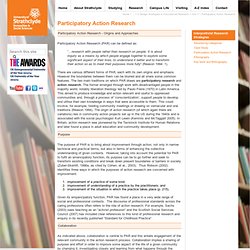

Practitioner-Led Action Research: The individual learning planning process. An introduction to practitioner-led action research - a 'how to' guide for practitioners and managers This short guide is designed to support ALN practitioners interested in conducting action research projects.

In this guide we have tried to answer what we think are the most common questions practitioners want to ask about running their own research project, but more detailed answers are provided in the extra resources listed at the end, so please make sure to have a look at these. What is practitioner-led action research? Practitioner-led action research ( PLAR) is a way for practitioners to conduct small-scale research projects and to change their practices based on the findings. It is called 'practitioner-led' to emphasise that the questions, the methods and the meaning of the results will be determined by practitioners. Perhaps this raises questions about what research means. From the PLAR project The Individual Learning Planning Process (2008) Why would we be interested in PLAR? 1. 2. Participatory Action Research. Participatory Action Research - Origins and Approaches Participatory Action Research (PAR) can be defined as: “…research with people rather than research on people.

It is about inquiry as a means by which people engage together to explore some significant aspect of their lives, to understand it better and to transform their action so as to meet their purposes more fully” (Reason 1994: 1). There are various different forms of PAR, each with its own origins and emphasis. However the boundaries between them can be blurred and all share some common features. Purpose The purpose of PAR is to bring about improvement through action, not only in narrow technical and practical terms, but also in terms of enhancing the collective understanding of given contexts.
Improvement of a practice of some kind; improvement of understanding of a practice by the practitioners; and improvement of the situation in which the practice takes place (p. 215). Collaboration Key Features Table 1 Task 5. Participatory Research: Background and Outlook. The shift in relationship between researcher and researched ... is so pronounced as to make ‘researcher’ and ‘researched’ nearly archaic terminology ... a blurring of boundaries between the two ... ruptures the old hierarchy Lincoln, Y. (2001) in Reason, P. and H.

Bradbury, eds. Handbook of Action Research: Participative inquiry and practice, p.126 Participatory Research provides a unique framework within which to conduct research since it is based upon notions of conducting research with and for research subjects. The imbalance of power relationships which occurs where research is conducted on or about research subjects is therefore challenged.
The participatory research paradigm – which may be traced to such figures as the Columbian sociologist Orlando Fals Border and the Brazilian educationalist Paulo Freire – can be seen as challenging the traditional ‘researcher-researched’ dichotomy on two fronts: Adapted from Cornwall (1996) and Truman and Raine (2001) ↑ Top of Page. Participatory Action Research & Organizational Change.
Center for Collaborative Action Research- Action Research with technology, Pepperdine University. What_is_Practitoner-Led_Action_Research? ACTION RESEARCH IN WORKPLACE EDUCATION - A Handbook for Literacy Instructors - Table of Contents.